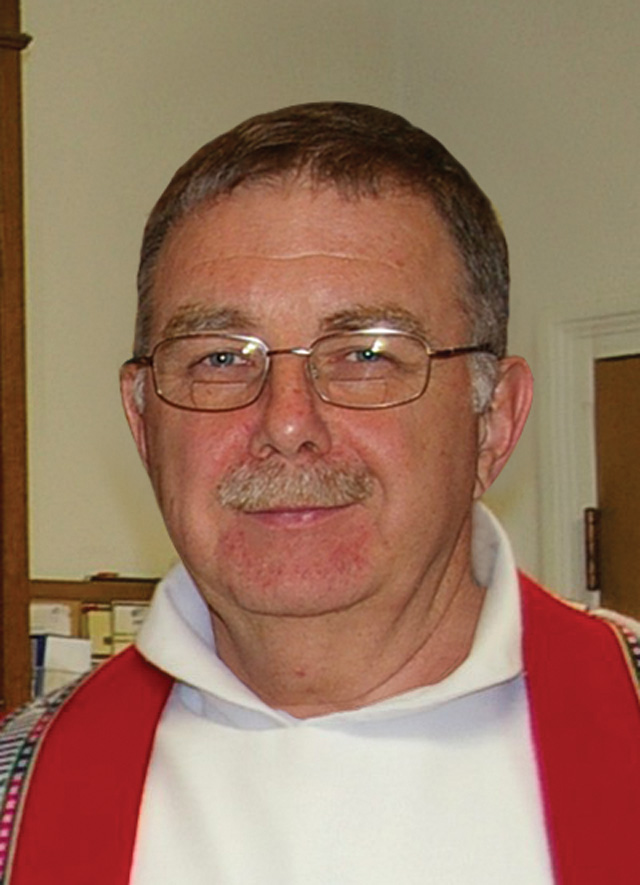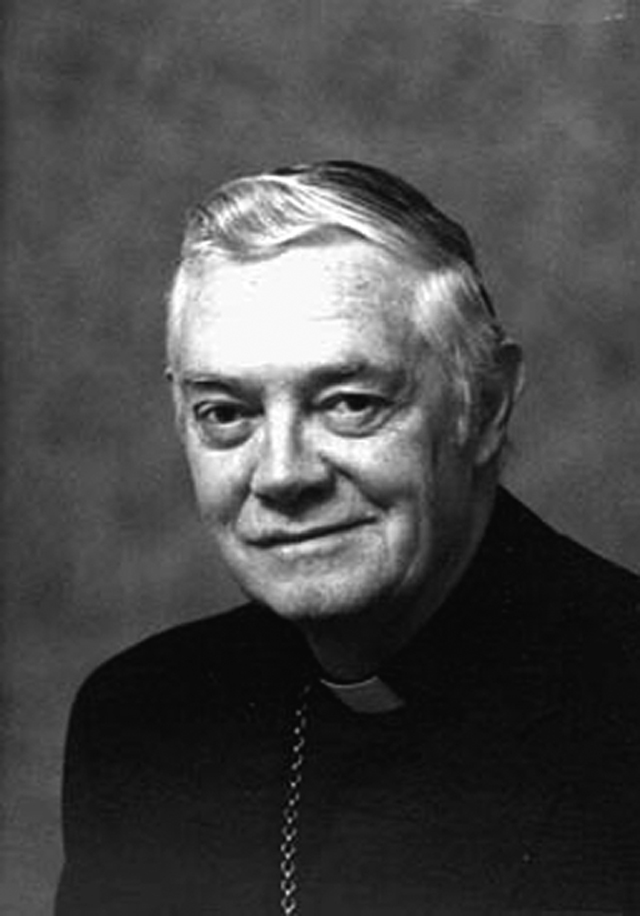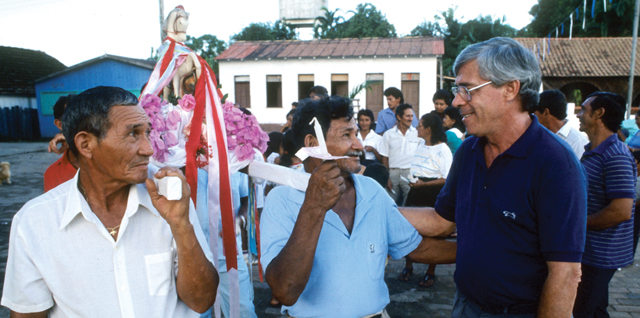Missionaries in the jungle
The journey of Scarboro Missions in the Brazilian Amazon
By Fr. Ron MacDonell, S.F.M.
January/February 2013
Return to Table of Contents
Print Article
In Brazil’s vast Amazon jungle at a place where the Amazon River is at its narrowest lies the small city of Itacoatiara, meaning “Painted Rock” in the Tupi language. Five young Scarboro missionary priests arrived here in 1962 to begin their witness to Christ. Baptism, the celebration of the Eucharist and other sacraments were the main focus of the young priests as they served the various parishes along the riverbanks. They travelled by boat and canoe to the small towns and villages where the riverside dwellers eked out a living by fishing and farming cassava root.
The People of God
One of the priests, Fr. Paul McHugh, was appointed the first bishop of the newly created Prelacy of Itacoatiara in 1965. A prelacy is a new church region assigned to a religious congregation until it is sufficiently autonomous (that is, with local clergy) to become a diocese. That year, Bishop McHugh (inset) attended the last session of the Second Vatican Council in Rome. The inspiration of values affirmed by the Council, such as collegiality and consultation, the Church as “People of God,” and the celebration of Mass in vernacular languages, led to an expansion of Scarboro missionaries’ work in the Amazon. They began training Catholic lay leaders, teaching them to organize Sunday morning services and to plan catechetics for adults and children in their communities.
A prophetic voice
The missionaries’ attention turned as well to social problems, such as the over-fishing of lakes and rivers by large commercial trawlers. The church became a prophetic voice in denouncing injustices and calling people to build more just social relations. Concrete actions were taken. For example, several Scarboro priests founded an agricultural school for students from the rural villages near the town of Urucará. In 1978, the Prelacy’s second bishop, Scarboro missionary George Marskell, continued to affirm the Church’s social responsibility, particularly in defending the cause of people who were landless. Bishop Marskell served a term as national Vice-President of the Land Pastoral Commission of the Brazilian Bishops’ Conference.
“I know that all of you believe with me that our Church is, and tends to be, more and more participative, more and more a Church of solidarity. Only so can we become a Church with the face of Jesus.”
Bishop George Marskell, SFM, 1935-1998
In the 1980s, Scarboro lay missioners joined Scarboro priests in the prelacy serving in various pastoral areas including parish catechetics, youth groups, and on the Human Rights Committee. They participated in the Children’s Pastoral Commission founded by Dr. Zilda Arns, sister of Cardinal Paul Evaristo Arns of São Paulo. Many lives were saved though basic health education, teaching nutrition and dehydration prevention to mothers of infants up to two years of age. Several Scarboro seminarians also spent part of their vocational training serving in the Prelacy. These former lay missioners and seminarians, upon their return to Canada, contributed to an emerging phenomenon: reverse mission; that is, educating other Canadians about situations of poverty and injustice that were impacting the lives of the people in Brazil. We now consider this an important part of our Scarboro legacy: mission is both “here and there.”
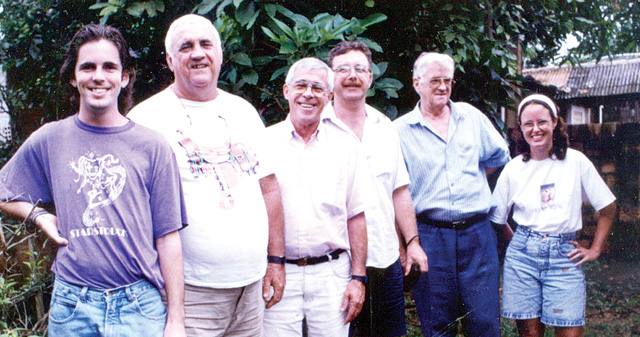 The Brazil mission team of 1996: L-R: Lay missioner Paul McGuire, Fr. Omar Dixon, Bishop George Marskell, Frs. Ron MacDonell and Doug MacKinnon, and lay missioner Karen Van Loon.
The Brazil mission team of 1996: L-R: Lay missioner Paul McGuire, Fr. Omar Dixon, Bishop George Marskell, Frs. Ron MacDonell and Doug MacKinnon, and lay missioner Karen Van Loon.
I arrived in Brazil in 1986 and first served as parish priest in rural communities. In 1992, at the invitation of Bishop George Marskell and Bishop Aldo Mongiano of Roraima, I carried out post-graduate studies in linguistics, concentrating on the language of the Makushi people. I lived in a Makushi village for two years, became friends with the people, and embarked on the work of language revitalization. The Makushi are concerned about keeping the language alive among younger generations and, to this end, we produced bilingual Makushi-Portuguese dictionaries, radio programs and books of traditional stories.
As I reflect on my 27 years of mission work in Brazil, I am extremely grateful to God for my call to missionary priesthood. What attracted me to Scarboro was that all the Scarboro missionaries I had met were focused on working for the poor and the marginalized, what the Latin American Bishops meeting in Medellin, Colombia, in 1968 called “the preferential option for the poor.” I feel that Scarboro missioners took this very seriously. I saw the tireless commitment of Bishop George Marskell and Fr. Doug MacKinnon in serving the poor in the Amazon. I was amazed by Fr. Harvey Steele, founder of ICI (the Interamerican Cooperative Institute) in Panama, who befriended me when I was studying theology in Toronto, and told me many stories of his time in China and of his subsequent work in Latin America. I remember, too, Fr. Buddy Smith from my hometown of Antigonish, Nova Scotia, who was a good friend of my parents. Fr. Buddy’s work in the Dominican Republic, in Nicaragua and with refugees in Canada loomed large in my young imagination of what it meant to be a missionary. These are some of the “Scarboro saints” who have gone before us; they shine as brilliant lights in our missionary legacy.
Reverse mission—that is, educating other Canadians about situations of poverty and injustice that impacted the lives of the people in Brazil—is now considered an important part of our Scarboro legacy: mission is both “here and there.”
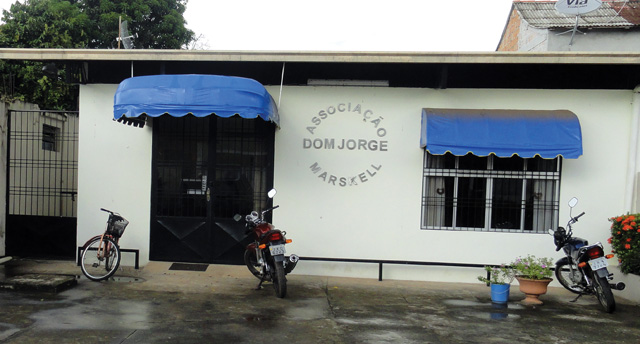 The Bishop George (Dom Jorge) Marskell Association founded by lay people to keep alive the Social Gospel of the Church. Itacoatiara, Brazil.
The Bishop George (Dom Jorge) Marskell Association founded by lay people to keep alive the Social Gospel of the Church. Itacoatiara, Brazil.
As the year 2013 begins, only one Scarboro missioner still resides in Brazil, Fr. Omar Dixon who is retired in Itacoatiara after serving many years in rural parish life. However, Scarboro’s legacy lives on through the Bishop George Marskell Association founded by lay people after his untimely passing in 1998. The Association keeps alive the social Gospel of the Church, the Gospel so intensely embraced by Scarboro missioners, with programs such as a children’s library; lessons in flute, guitar and choral song; a hall for meetings; and offices offering free legal consultation for poor people and pastoral counselling for those in need. This vision of church lived out in Itacoatiara by both priest and lay missioners and local lay leaders is best described in the words of Bishop George, spoken just a month before he passed away, when he addressed the People’s Assembly of the Prelacy in June 1998: “I know that all of you believe with me that our church is, and tends to be, more and more participative, more and more a church of solidarity. Only so can we become a church with the face of Jesus.”
Return to Table of Contents
Print Article
